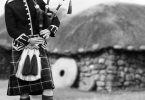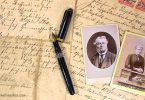Do you have Mayflower ancestry, or do you believe that you do? Maybe your family has stories of Mayflower ancestry that you would like to prove to be true. Maybe you want to find and verify a Mayflower line in order to join the General Society of Mayflower Descendants. Perhaps you are writing a family history, and want to find an interesting or historically important line to include in it. Either way, you will want to know the best ways to begin researching and proving your potential Mayflower ancestry.
If you already know the name of your supposed Mayflower ancestor, it is easier to start with your Mayflower genealogy. The General Society of Mayflower Descendants publishes a set of what are called “Silver Books” that document the proven descendants of Mayflower passengers to five generations out from them. You can order the book that pertains to your supposed ancestor, or find it online or at a library that has genealogy books.
Once you have the first five generations beyond your Mayflower ancestor from the book, you can use traditional genealogy research techniques to bring the line forward to the present, and to you. The first five generations usually go to the late 1700s, which is about when public vital records began to be common in the United States, which is helpful in researching your family tree.
The Silver Books don’t cover every single Mayflower passenger yet, but the Society is working on it. The passengers with Silver Books of their own so far include:
- John Alden
- Isaac Allerton
- John Billington
- William Bradford
- Elder William Brewster
- Peter Brown
- James Chilton
- Francis Cooke
- Edward Doty
- Francis Eaton
- Edward Fuller
- Samuel Fuller
- Stephen Hopkins
- John Howland
- Richard More
- Degory Priest
- Thomas Rogers
- Henry Samson
- George Soule
- Myles Standish
- Richard Warren
- William White
- Edward Winslow
If your supposed Mayflower ancestor is not among these books, you may still be able to find some information on them from the Society. The Society also publishes what are called Pink Books, which are books of research on Mayflower passenger families that are in progress. Eventually, they will be made into Silver Books, but in the meantime, you can use the pink books to discover what information on that passenger’s family has been proven thus far.
If you don’t know the name of your Mayflower ancestor or are not sure if you are related to a passenger and want to discover if you are, you will want to start by looking more deeply into any of your family lines that have origins in New England. If you don’t have the lines back to 1620, when the Mayflower arrived, try to get them there with proper research techniques, and document the proof you use for each line you research. You may find a Mayflower ancestor in there. After all, there are more than thirty-five million people in the United States with Mayflower ancestry. You could be one of them.






